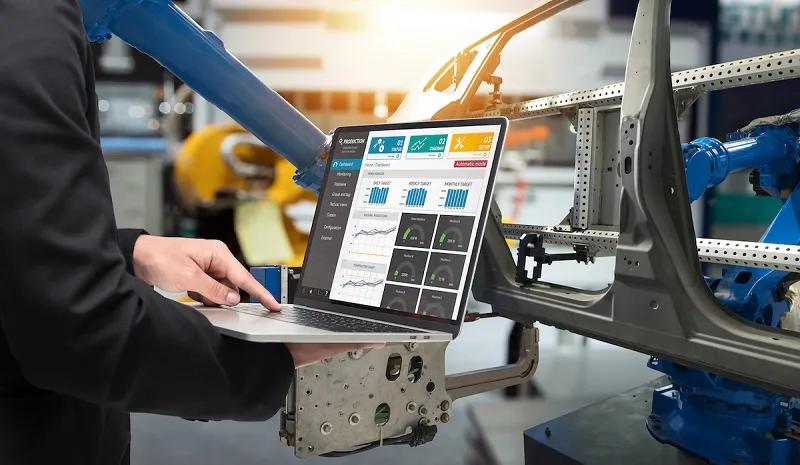What is a production report?
A production report is a document that provides detailed information about the production process of a company or organization. It typically includes data related to the production of goods or services, such as the quantity and quality of output, production costs, efficiency metrics, and any issues that may have arisen during the production process.

Definition of production report
The purpose of a production report is to provide management and stakeholders with accurate and timely information about the production process, enabling them to make informed decisions and take necessary actions to improve performance and achieve organizational goals. Production reports can be created on a daily, weekly, monthly, or annual basis, depending on the needs of the organization.
How many types of production reports are there?
There are several types of production reports that organizations may use to track and monitor their production process. The specific types of reports may vary depending on the organization's needs, but some common types of manufacturing reports include:
- Daily Production Report: Provides information on the production output, efficiency, and any issues that occurred on a daily basis.
- Weekly Production Report: Summarizes the production performance for the week, including metrics such as production volume, efficiency, and quality.

Example of a weekly report
- Monthly Production Report: Provides a monthly overview of the production process, highlighting any trends, issues, or areas for improvement.
- Annual Production Report: Provides an annual summary of the production process, including a review of the performance over the year, any challenges faced, and plans for improvement.
- Quality Control Report: Provides information on the quality of the products or services produced, including any defects or issues found during the production process.
- Maintenance Report: Provides information on the maintenance and repair of production equipment, including any downtime or delays caused by maintenance activities.
- Cost Report: Provides information on the production costs, including material, labor, and overhead costs, as well as any cost-saving measures implemented.
These are just a few of the types of production reports that organizations may use to monitor and evaluate their production process. The specific types of reports used will depend on the organization's goals, operations, and reporting requirements.
Key Components of a Production Report
The key components of a production report may vary depending on the specific needs of the organization and the type of report being generated. However, some common components of a production report include:
- Production Targets: This section outlines the production targets that were set for the reporting period, such as the number of units to be produced or the amount of work to be completed.
- Actual Production: This section provides information on the actual production output achieved during the reporting period, such as the number of units produced, the amount of work completed, or the volume of goods sold.

Components of a Production Report
- Production Efficiency: This section measures the efficiency of the production process, typically in terms of production output per unit of input, such as the number of units produced per hour or the amount of work completed per employee.
- Production Costs: This section details the costs associated with the production process, including material costs, labor costs, and overhead costs.
- Quality Control: This section provides information on the quality of the products or services produced, including any defects or issues found during the production process.
- Safety Issues: This section identifies any safety issues or incidents that occurred during the reporting period, such as accidents or near-misses.
Benefits of Using Production Reports
There are several benefits to using production reports in an organization. Here are some of the key benefits:
- Monitoring Production Performance: Manufacturing reports enable organizations to monitor their production performance by providing accurate and timely data on production output, efficiency, and costs.

Monitoring Production Performance
- Identifying Areas for Improvement: By analyzing production reports, organizations can identify areas for improvement in the production process, such as inefficiencies, bottlenecks, or quality control issues.
- Analyzing Trends: This report provides valuable data over time that can be used to analyze trends in production performance and identify patterns or areas of concern.
- Making Informed Decisions: With manufacturing reports, organizations can make informed decisions about the production process, such as whether to invest in new equipment, hire additional staff, or change production methods.
- Evaluating Employee Performance: These reports can be used to evaluate the performance of individual employees or teams by tracking their production output and efficiency over time.
- Improving Communication: By sharing manufacturing reports with employees, management, and stakeholders, organizations can improve communication and ensure that everyone is on the same page regarding production performance and goals.
In general, production reports can help organizations to optimize their production process, improve efficiency, reduce costs, and achieve their production goals. By using their reports as a tool for analysis and decision-making, organizations can stay competitive and achieve long-term success.
How to Create Effective Production Reports
Creating effective production reports requires careful planning and attention to detail. Here are some key steps to follow:
Step 1: Define the Objectives
Before creating a production report, it's important to define the objectives of the report. What information do you need to track? What are the goals of the report? What decisions will be made based on the report? Answering these questions will help you to create a report that is focused and relevant.
Step 2: Determine the Key Performance Indicators (KPIs)
Identify the key performance indicators that you will track in the report. KPIs may include production volume, efficiency, quality control, costs, and safety incidents. Make sure that the KPIs are aligned with the objectives of the report.
Step 3: Gather the Data
Collect the necessary data for the production report, including production output, employee performance, and cost data. Ensure that the data is accurate and up-to-date.
Step 4: Organize the Data
Organize the data in a clear and logical manner. Use tables, charts, and graphs to make the data easy to understand and visually appealing.
Step 5: Analyze the Data
Analyze the data to identify trends, areas for improvement, and opportunities for optimization. Use the data to inform decision-making and make recommendations for improvement.
Step 6: Include Commentary
Include a commentary section in the report to provide context and insights into the data. Use the commentary to explain any anomalies, highlight successes, and identify areas for improvement.
Step 7: Review and Revise
Review the production report regularly and revise it as necessary to ensure that it remains relevant and effective. Solicit feedback from stakeholders to ensure that the report is meeting their needs.
By following these steps, you can create effective production reports that provide valuable insights into the production process and help to drive continuous improvement












Replies to This Discussion